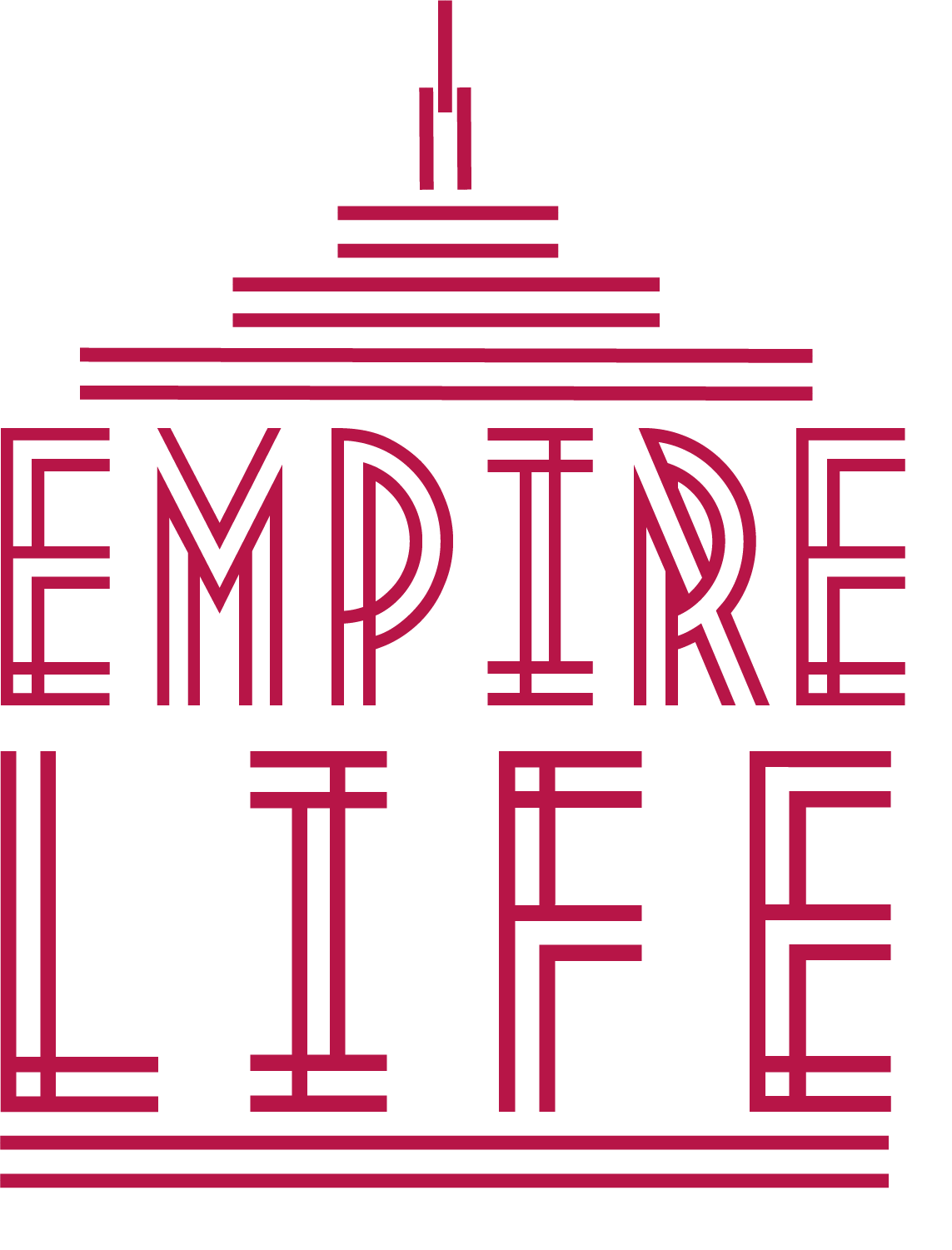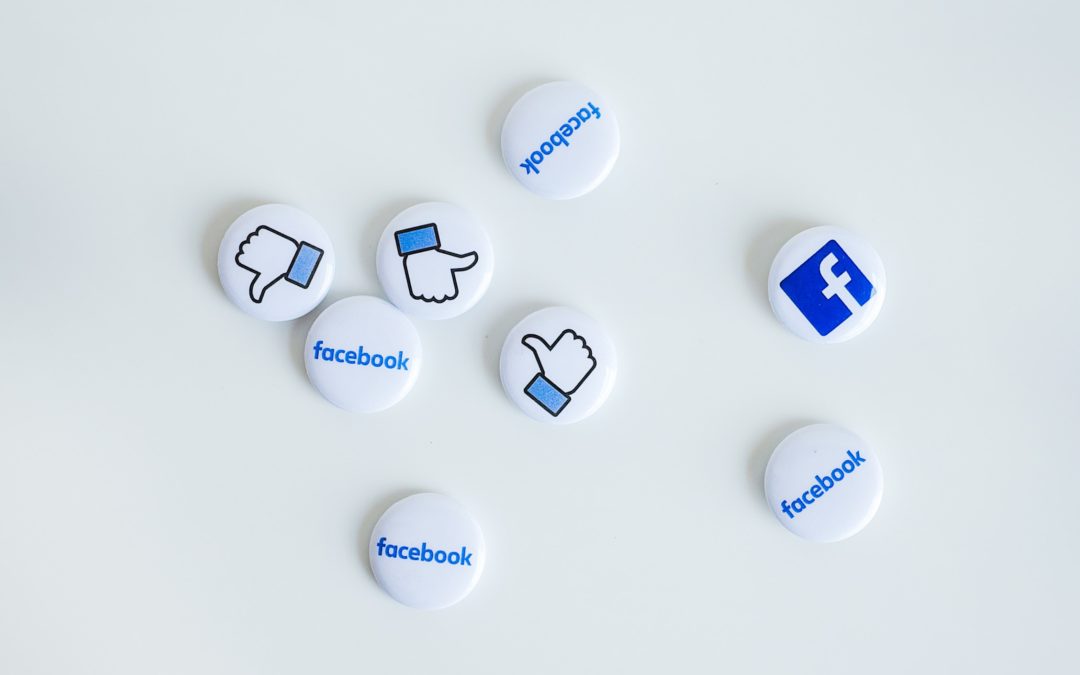10 Tips to Running a Successful Facebook Ad
Facebook is currently number one when it comes to social media advertising. This is why running successful Facebook ads is important for business success in any online business. As a Facebook Digital Marketing Professor and Founder of Tech & Digital Marketing Company Empire Life, I fully understand the benefits of tapping into Facebook Marketing and Advertising with Facebook Ads.
Facebook ads are often the most cost effective and most easily trackable way to accomplish online advertising. Facebook ads are also optimizable! This gives us a lot of control over our ads, yet we need to know what we’re doing if we desire Facebook ad success.
Small businesses are often using Facebook to increase sales.
Here are 10 must-know essentials for running successful Facebook ads:
1. Know the Goals
In order to run successful Facebook ads, you must first answer this question: what do we want our ads to accomplish?
Do we want more followers? More engagement? More sales? With this in mind, facebook has a unique marketing objective for each of our goals!
Above are the different marketing objectives we can choose from. Each of these marketing objectives correspond to different end goals.
If we want more people to click on our website, we’ll run a traffic campaign. Likewise, if we want to generate sales, we’ll run a conversion campaign.
A few of the objectives also contain sub-objectives.
There are three different types of engagement campaigns. The one we select will depend on our overall goal.
If we want more followers, we’ll run a ‘page like’ ad.
If we want more likes, comments, and shares on our posts, we’ll run a ‘post engagement’ ad.
If we want more people to go to an event we’re promoting, we’ll run an ‘event response’ ad.
We can run Facebook ads that can optimize just about everything!
Having a particular goal in mind will help us determine the success of the ads.
2. Hone in on the Audience
According to the latest statistics released by Facebook, they now have 1.59 billion daily users who we could be converting into clients and customers! Everyone is on Facebook, whether they’re a Founder or a college student.
With these statistics, only posting on Facebook won’t be enough to convert users into clients and customers. We need to run Facebook ads, and they need to be well targeted Facebook ads, to truly generate conversions, sales, and meet objectives.
These are areas we can start below if we’re not sure who is our target audience.
These three general audience options are a cold audience of everyone on Facebook (which we can narrow down from there) or warmer audiences of either people connected to our pages or custom audiences.
If we already have a decent number of page likes and we want to turn our followers into clients, we can select people already connected to our pages as a target audience.
This ensures the people we advertise to are familiar with your company and interested in what you’re selling.
If we don’t have many followers, but we do have a customer audience, and a custom list this can be a good option. We can upload our customer list directly to Facebook and Facebook can generate a replica audience consisting of users similar to the ones we’ve provided.
What do we do if we don’t have a customer list or a lot of followers? This is a common concern for many startups and small businesses. To start building our audience from the ground up, it is best to select the “Everyone on Facebook” option.
Gathering a useful audience out of everyone on Facebook can be overwhelming, but Facebook’s Audience Insights is a helpful tool to help us out. First, you’ll want to set any specific parameters you know you want.
One example of setting parameters, we may want to advertise only to people in the U.S. or people eighteen or older. We can set these parameters first before we start diving into data from Audience Insights.
Once our parameters are set, we can start searching for data about the followers of our competitors. This will give us a great starting point to formulate our select target audience. An example on selecting our target audience, let’s say we own an online jewelry ecommerce store. Under the “Interests” parameter, we may want to select people who like the pages of our competitors.
For an e-commerce store, a potential competitor might be Blue Nile, Lovoda, and BLK & Noir. Once we’ve selected these interests, the Audience Insights tool will give us demographic information for the followers of these companies.
Here is what some of the demographic information for people who like Lovoda:
Gathered from this information, we can see that most of Lovada’s Facebook fans are college-educated, and married women.
We can use the information gathered from Audience Insights to set up a few potential audiences and use A/B split testing to determine the best one for a client.
Stay tuned for more information on A/B split testing later in this article too!
If we need to, we can make different ads for different segments of our audience. We need to make sure our target audience is moderately large and as specific as possible.
3. Utilize Eye-catching Graphics
The first graphic our audience sees is the impact we are capable to make. When we’re confined to a limited number of characters, the graphic will have a huge impact!
A potential client might scroll right past our ads without reading them if the graphic doesn’t catch their eye.
To prevent losing valuable clients, we must select bright, clean, high-quality images for successful Facebook ads. We need to make sure the graphic contains less than 20% text, or Facebook will show your ad to fewer people.
The best kind of graphic is one that applies to your specific business as well as to your target audience.
Even possibly better, we can use a video! Videos can convey a lot more information than a single graphic. Plus, with Facebook’s autoplay feature, you may be able to gain the attention of viewers who otherwise would have scrolled right past the specific ad. We need to make sure our video doesn’t rely on sound, and it displays clear subtitles.
85% of Facebook videos are watched on mute!
This is because of the fact that most Facebook users watch these videos with their mobile phones. And when they are out in public, they don’t want to disturb the people around them with video sounds.. We need to create video ads for Facebook that are optimized for silence.
Let’s dive deeper into which is better, static content or a video? Facebook reports users tend to gaze at videos they see on their News Feed 5x longer than they do with static graphics and content.
To sum it up, whether you opt for a graphic or a video, the most successful Facebook ads include people’s faces with clear and bright colors.
Our brains are hardwired to recognize faces, therefore including a face will make our ads more eye catching.
Also, displaying people using our products can make them seem more relatable!
4. Understand What to Portray in the Content (and what not to portray)
Now you know what kinds of images are necessary for successful Facebook ads, but what about the copy?
The most successful Facebook ads have content that includes three elements: a sentence to add value, an attention grabbing sentence or a few sentences, and a call to action at the end. The attention grabber is the hook that generates more interest in our ads.
If the first phrase or sentence of your copy doesn’t peak the reader’s interest, they will stop reading.
Once we’ve gotten their attention, we need to add value to our copy.
We need to explain to the user why they benefit from clicking on our ad.
The call to action (CTA) is what we want the reader to do.
Do you want them to purchase a product? Click onto a website, your sales funnel? Sign up for a newsletter? Be sure to make this clear in your call to action.
Some examples of the most popular calls to action are “learn more,” and “shop now”.
The above ad is designed to send people to a company blog. The call to action is effective because it lets the reader know they need to click onto the blog to learn all the reasons they should invest in SEO. It’s clear, succinct, and generates interest.
Whether or not you use the three sentence model, be sure to keep your text short and clear. The truth is, people won’t read a large block of text that looks overwhelming or time-consuming to read.
Successful Facebook ads usually contain buzzwords such as “free,” “promo code,” or “sale”. When running campaigns, always create a sense of urgency by using phrases like “act fast,” or “this deal won’t last long!” People are more likely to react in the moment when they’re afraid they might miss out on something. If you’re not running a deal, action verbs like “test,” “see,” and “try” work well to create some urgency as well.
Now that you know what to say, you need to know what NOT to say. Facebook isn’t too keen on running ads with the word “you” in them and often will not allow those ads to run. However, you can go around this rule by using “you’re,” “your,” or “yourself” instead. Something to keep in mind is that there are certain types of products that cannot be advertised on Facebook like firearms and supplements. Any copy that seems like it could be advertising those products will be flagged.
5. Don’t sound like an ad
Studies show how people dislike feeling like they are being advertised to.
Studies have proven that people reject what they perceive as an attempt to persuade them. This may sound counter-intuitive, therefore the most successful Facebook ads don’t sound like Facebook ads at all.
The goal is to make users understand what the direct benefits are for needing to click on our ads in order to have them click on our ad rather than only telling them to.
Adding value is an important step to copywriting. Successful Facebook ads make potential client and consumer fully aware of why they need to follow the call to action.
Also, for sure people don’t like being told what to do. We need to gently guide them in have to understanding why it’s imperative for them to follow our call to action.
6. Utilize A/B split testing
It’s rare to see someone have a super successful Facebook ad the first time around, there is an answer to this without wasting your money. This is why A/B split testing is important to running successful Facebook ads! This is also a huge reason why we hear a lot of business coaches advise against putting money towards Facebook ads. It is advisable to have a professional or team, such as the Empire Life team run A/B split testing for you and your Facebook Ad.
At Empire Life when we run A/B split testing, we run several slightly different versions of a similar ad with multiple variations to research what sticks and what is not sticky. It’s used to single out the most effective elements which can then be combined into one optimal ad.
To start, figure out which elements you want to test for. The two most common things to test are images and copy. Once enough people have seen the ads (100 people is generally a good rule of thumb), we then begin turning off the ads that have high costs per click. We continue this process until the single most effective ad is the only one remaining.
A good recommendation is to start with three images and three copies, every variation of which should create 9 Ads total to test against one another. Once we’ve determined the best image/copy combo, you can begin testing other features like audiences, headlines, placements, and buttons.
Ads won’t be optimized overnight. We (Empire Life) let your ads run for at least a few days before we begin the optimization process. A/B split testing can be a time-consuming process, but it’s worth it in the end!
7. Install Conversion Pixels
Tracking pixels are one of the most useful tools for running successful Facebook ads.
A pixel is a piece of code that you or we can embed in your website. It allows us to track conversions and re-market your leads.
The data we collect is utilized to fine-tune your target audience and optimize your ads.
Facebook pixels allow you to track how people interact with our ads and our website. We can see which ads people clicked on to get to your website, which pages of the website they clicked on, and plus even what type of device they were using. This can help us learn which of your ads are the most effective and whether mobile or desktop users click on your ads more.
This also allows us to get a clear picture of the types of people who click onto your website so we know who else to include in your target audience.
So how do we create a Facebook pixel?
Start by clicking where you see the ≡ icon in Ads Manager and then choose “Pixels” on the drop-down list.
Next, click the green button that says “create a pixel.”
Then name your pixel, accept the terms, and click the “Next” button.
Once your pixel code has been generated, you can copy and paste it into the header of the page you want to track. If you are unfamiliar with coding, you may want to have the support of a web developer, Empire Life has software developers on the team.
We recommend to track these pages — shopping cart, check out, and purchase confirmation pages. This allows us to track conversions of people either turning into customers or clients or if they need to be re-targeted.
8. Start Re-targeting
Re-targeting is when you use the data from your tracking pixel to run special ads for people who clicked onto your website but didn’t make a purchase.
Have you ever clicked on a website and then seen ads for that same website the following day?
If yes, this is you experiencing being re-targeted! It’s an outstanding strategy for successful Facebook ads.
While only 2% of shoppers make a purchase on their first visit to an online store. Re-targeting allows us to generate specific ads for the 98% who showed an interest in your website but haven’t converted yet.
Re-targeting creates a warm audience of your ideal clients and consumers who are already aware of your brand and have interacted with it. We have the opportunity to entice them to grab a product they will otherwise pass up by running a special sale or promotion. This is extra effective strategy since we don’t have to run a promotion to your entire audience, only the specific warm audience.
It can often seem creepy, yet retargeting ads should make the user aware you know they’re interested in the product already. Be straightforward and you may be able to turn valuable leads into conversions.
9. Design & Develop Sales Funnels
Well developed and designed sales funnels are one of the most underutilized marketing strategies for marketing campaigns. This is a shame because they’re needed for successful Facebook ads!
A landing page or Sales Funnel is a web page with a lead magnet email form that can collect visitors’ email and name.
Getting people to click on our website is by making sure our ad copy is tempting on its own, a simple “learn more” call to action may be enough.
It is good to offer your website visitors a PDF, a freebie, or a workbook when they signup. By offering your audience something of value, you have a better chance of converting them into leads.
Also make sure to have the support of one of our software developers to have your website/ sales funnel be mobile friendly. Over ½ of the people who click onto your sales funnel will do so from a mobile device.
10. Create & Have a Healthy Ad Spend Budget
Facebook can be a money-motivated platform. What we mean is, the more ad dollars we are willing to spend on our ads, the more people will see our ads. If you want successful Facebook ads, we need to put a healthy budget behind them. Empire Life has Facebook Ads specialist on the team, comment here, DM Allison, or get in touch with us here.
The ad spend budget we determine together will depend on a lot of variables including how big your company/ business is, the price of your products and services, how large your target audience is, and what the direct ROI goals we set together are.
A healthy ad spend budget is at least $5 a day if we want to run successful Facebook ads.
The bottom line – The more one spends on ad spend, the more people will see the Facebook Ad.
When you follow these tips, you will be on your way to running successful Facebook ads.
If you are ready to get started boosting the success of your Facebook Advertising & Facebook Marketing, then please Contact Us today and our team can support you.
You can also find more information about Allison Ramsey, Facebook Digital Marketing Professor & Empire Life Founder at Instagram, LinkedIN, Website, and Twitter.
“The more one spends on Facebook ad spend, the more people will see the Facebook Ad.”
our Recent blogs
Check Out The Most Recent Blogs.

Building An Engaged And Large Email List (Part 2)
Building An Engaged And Large Email List (Part 2) I get the question a lot from clients, “Is Email Dead?” They want to know if email marketing is worth their time to set up and to know if setting up these sequences and promotions is also worth their time. In...

Building An Engaged And Large Email List (Part 1)
Building An Engaged And Large Email List (Part 1) When I think about the brands I enjoy, such as Nike, J. Crew, Spotify, American Eagle, Amazing Grass, CLEAN, DICK’S, and Athleta, I know I’m not a loyal brand advocate because of their products alone. I can...

Opting In
Opting In I see this every day in business owners opting themselves out of opportunities even before trying or knowing if they can achieve it or not. In them not fully knowing or owning their worth. Have you been opting yourself out of opportunities? Such as...
Let’s scale your online empire.
Say Hello!
Hi There! We will love to hear from you! Come Find Us on social and dm us!


It’s nearly impossible to find experienced people about this subject, yet you know what you’re talking about! Thanks!
Wow Sara, thank you! If you need further support on creating, managing, and launching a Facebook Ad please DM us. Appreciate you being here!
My relatives often tell me that I am wasting my time here, at web, but I know I am gaining more knowledge daily by reading such pleasant articles or reviews here at Empire Life’s Blog. I see I’m getting knowledgable articles here on Empire Life’s site. Please publish more blog articles, they have changed my life in the best way!
You are in the right place Etienne, spending time on improving your knowledge and skills is always a great use of your time. Thanks for being here!
I was very happy to discover this great site. I want to to thank you for
this particularly wonderful read!! I definitely really liked
every part of it and I have you saved as a favorite to
see new information in your website.
Glad to see this feedback Reginald. Appreciate you saving the site, there are more published articles coming for you on relevant topics in personal development, digital marketing, business, online empires, & tech. Glad you are enjoying the blog, thanks for being here!
I know our greatest wishes will come true.